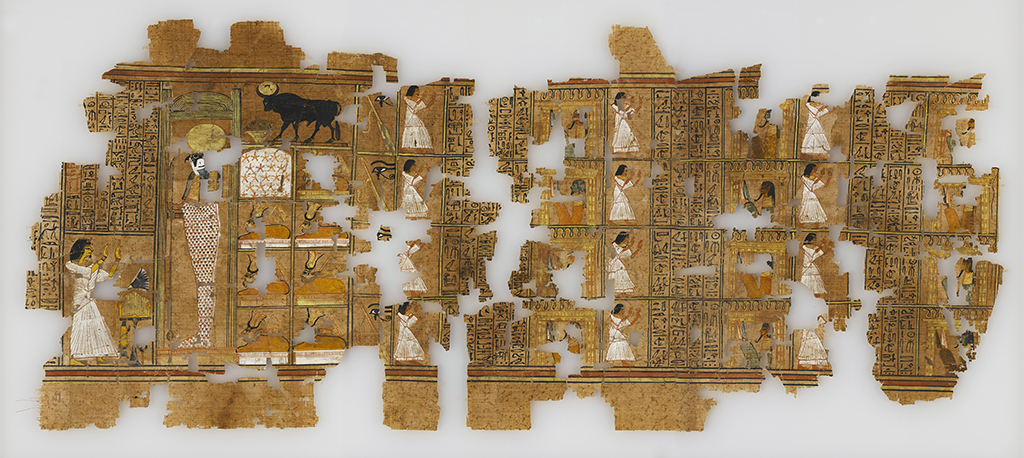
This papyrus was discovered by Flinders Petrie in one of the lesser-known cemeteries in Egypt, that of Sedment near the Fayum. One of the most important acquisitions made by the Friends, it contains the Book of the Dead, the celebrated Egyptian funerary text whose magical recitations offered the commissioner (in this case a man named Ramose) safe access to the afterlife. Cockerell purchased it on the advice of Frederick William Green, who had been appointed as his Assistant Director in December 1908, became the first Honorary Keeper of Egyptian Antiquities in 1910, and remained in this post until his death in 1949.
The papyrus was in a precarious condition and Mr J.M. Edmunds of Jesus College was entrusted with its conservation. The following year Cockerell reported that Mr Edmunds had ‘partially recovered many subjects,’ but others may never be reconstructed because the scroll was fragmentary. Nevertheless, the high quality of execution and the vibrant pigments can be appreciated today as much as they were at the time of excavation, since most of the papyrus remained in storage until 2005 when a new conservation campaign began at the Fitzwilliam Museum.
Spell 110 displayed here demonstrates the exceptional quality of the original painting and the success of the current conservation programme. It shows a large part of a spell in which Ramose states that he knew the names of the Seven Celestial Cows and the Bull of Heaven. The bull and the cows are illustrated to the right of the god Sokar. On their right are the four Rudders of Heaven, representing the four points of the compass, protected by wedjat-eyes. Beyond these, Ramose makes a series of recitations to twelve deities in shrines.




